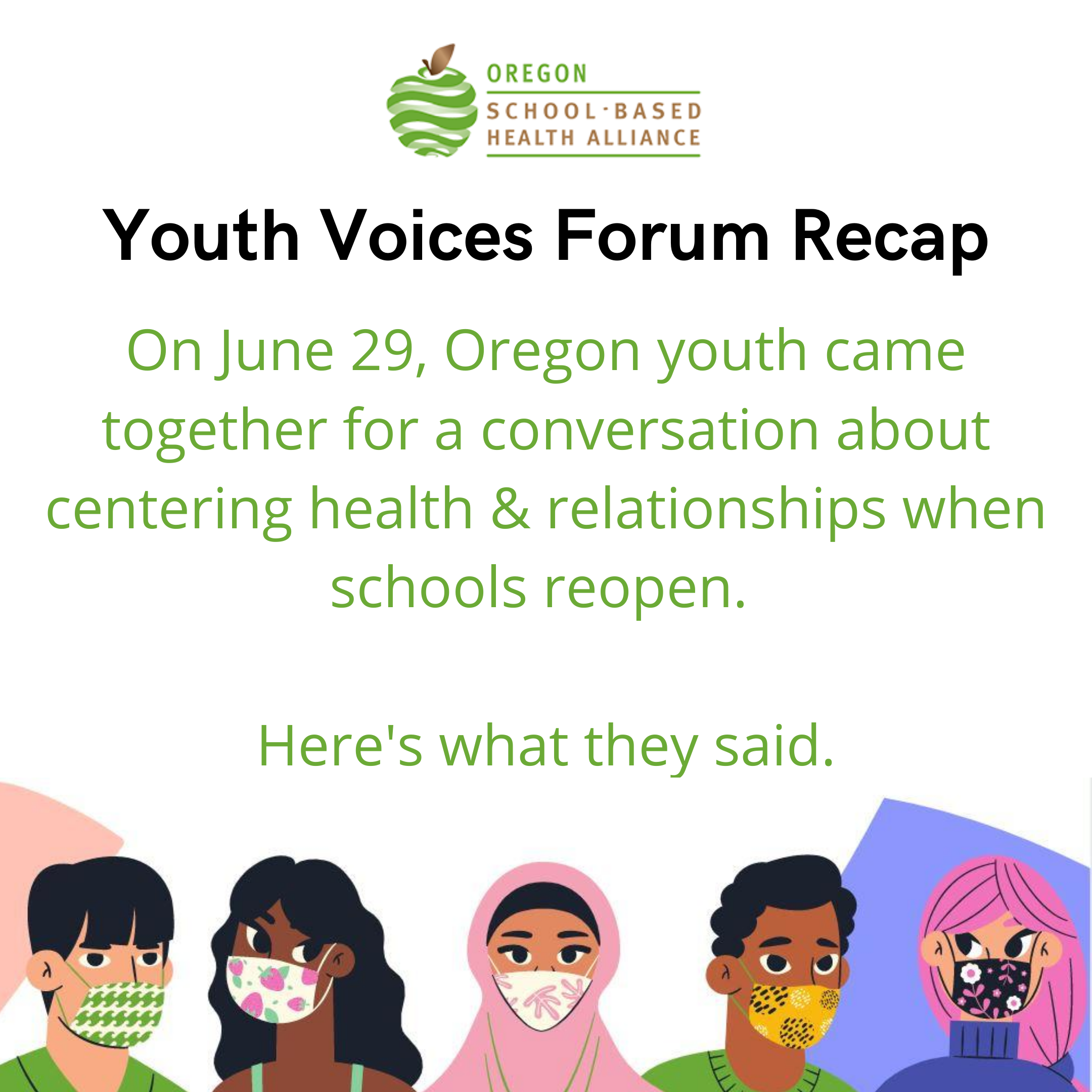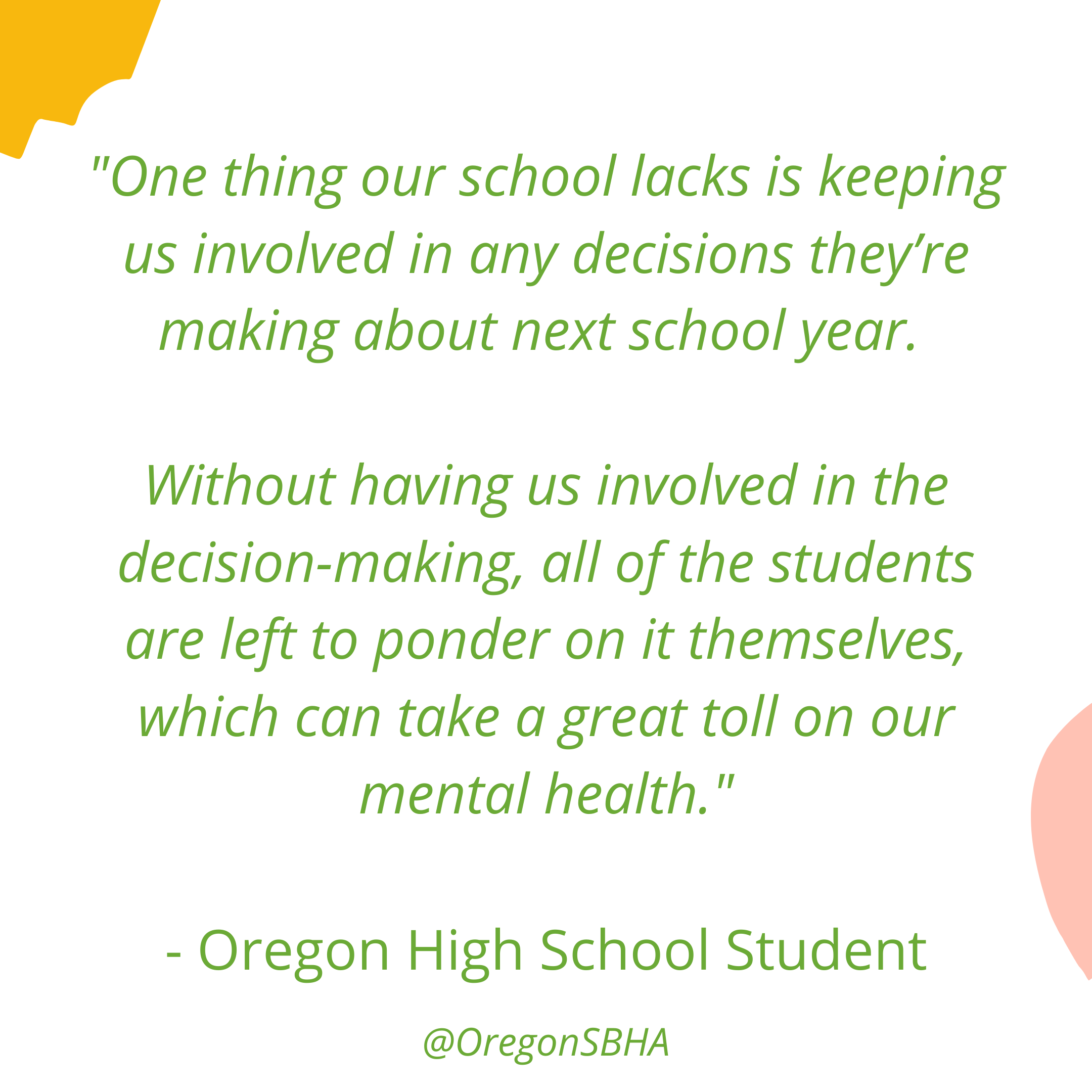27 July 2020 By Ashley McAllister
On June 29, 2020, Oregon School-Based Health Alliance Student Health Advocates organized an online youth forum to gather feedback about current Oregon Department of Education policies and guidelines for school re-opening. 15 high school youth from across the state joined for a conversation about how to center health and relationships within health protocols, instructional time, and mental health guidelines. Here is a summary of their feedback.

Things schools have done well:


Things schools have done well:
- Provided resources such as food and laptops. Some schools allowed students to keep laptops during the summer.
- Teachers were flexible with their schedules and checking in with students. Teachers reached out to students to check in with them individually.
- Schools acknowledged that this is a hard time.
- Some schools sent surveys asking students what they want to see when school reopens, and provided choices around that.
- One school did a virtual assembly to boost morale.
- Reached out to parents to find out what their needs are.
- Students needed more resources and accommodations provided around mental health. Offer more skill-building opportunities on topics such as stress relief and how to cope with COVID-19.
- Schools didn’t provide additional mental health resources to Black students who were going through COVID-19 trauma as well as the trauma of countless police brutalities.
- There could have been more support and resources to teachers transitioning into online learning. There was a lack of structure, organization, and communication.
- More support to students whose families do not speak English at home.
- Involve students in decision-making for next school year.
- The workload placed on students was unrealistic and there was a lack of support.
- Make resources available to everyone and explicitly state how to access the resources.

- How will cohort groups be determined? Will students have a choice on who is in their cohort? How is their safety from prioritized if an abuser or bully is in the same cohort?
- Guidelines aren’t specific about space in schools with small classrooms. 10 students can be a lot in a small space.
- Concerns with limited resources such as food, technology, supplies, and health resources.
- What will happen with sports and other after-school activities?
- Mental health can affect how students show up in the classroom. Students are worried schools will not take necessary steps to implement mental health services.
- Students who “did well” in school weren’t taken seriously about mental health concerns.
- Students are worried about switching between online and remote classes.
- Online learning could be hard for students with learning disabilities.
- Some home spaces are not great for online learning due to safety concerns, noise levels, and internet connection.
- A lot of students were given an unrealistic amount of homework. Many students have to help their siblings with online work which makes it harder to finish their assignments.
- What will transportation look like?
- How will students get support in their AP classes?
- Safety of students who now spend more time at home.

